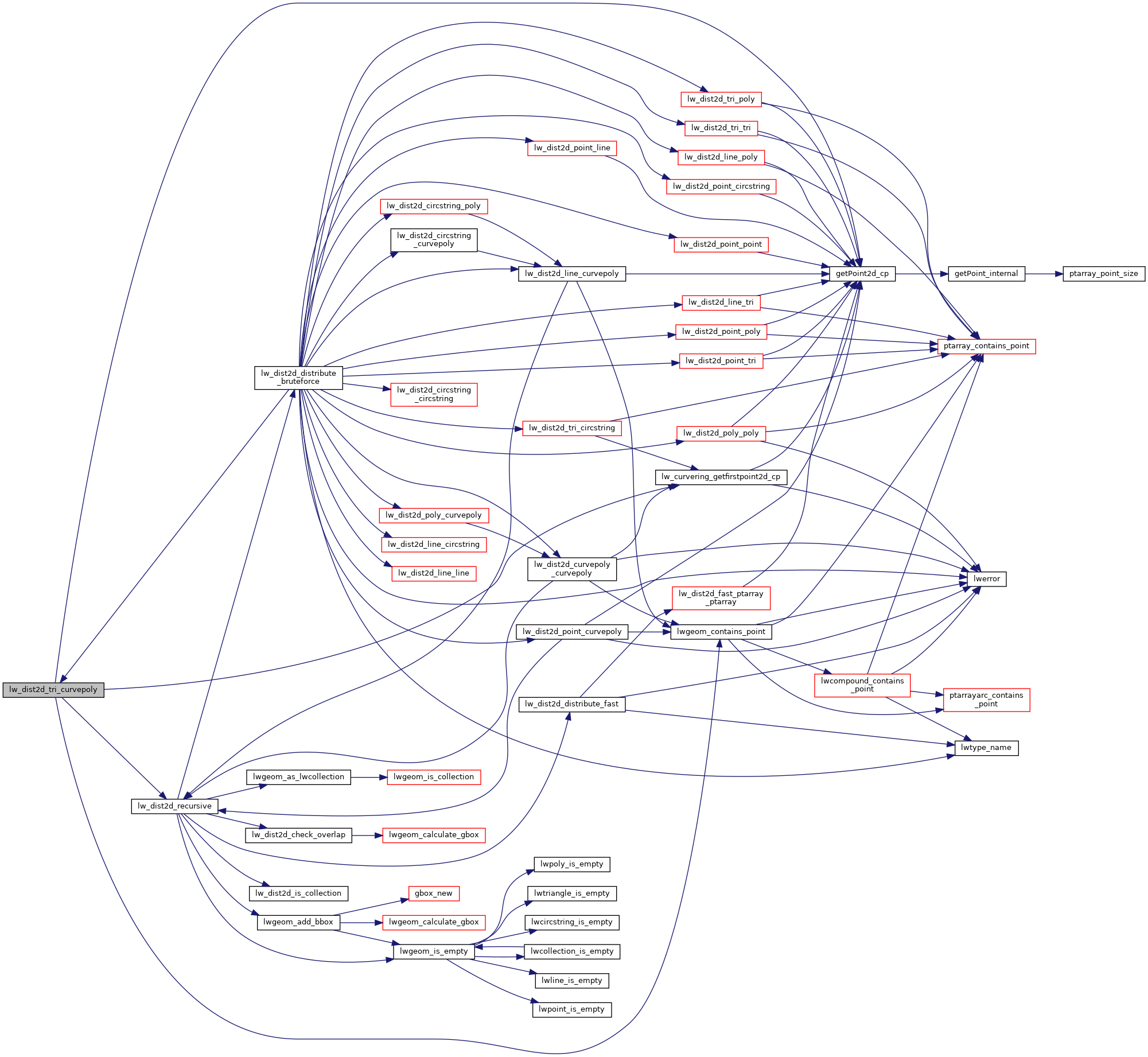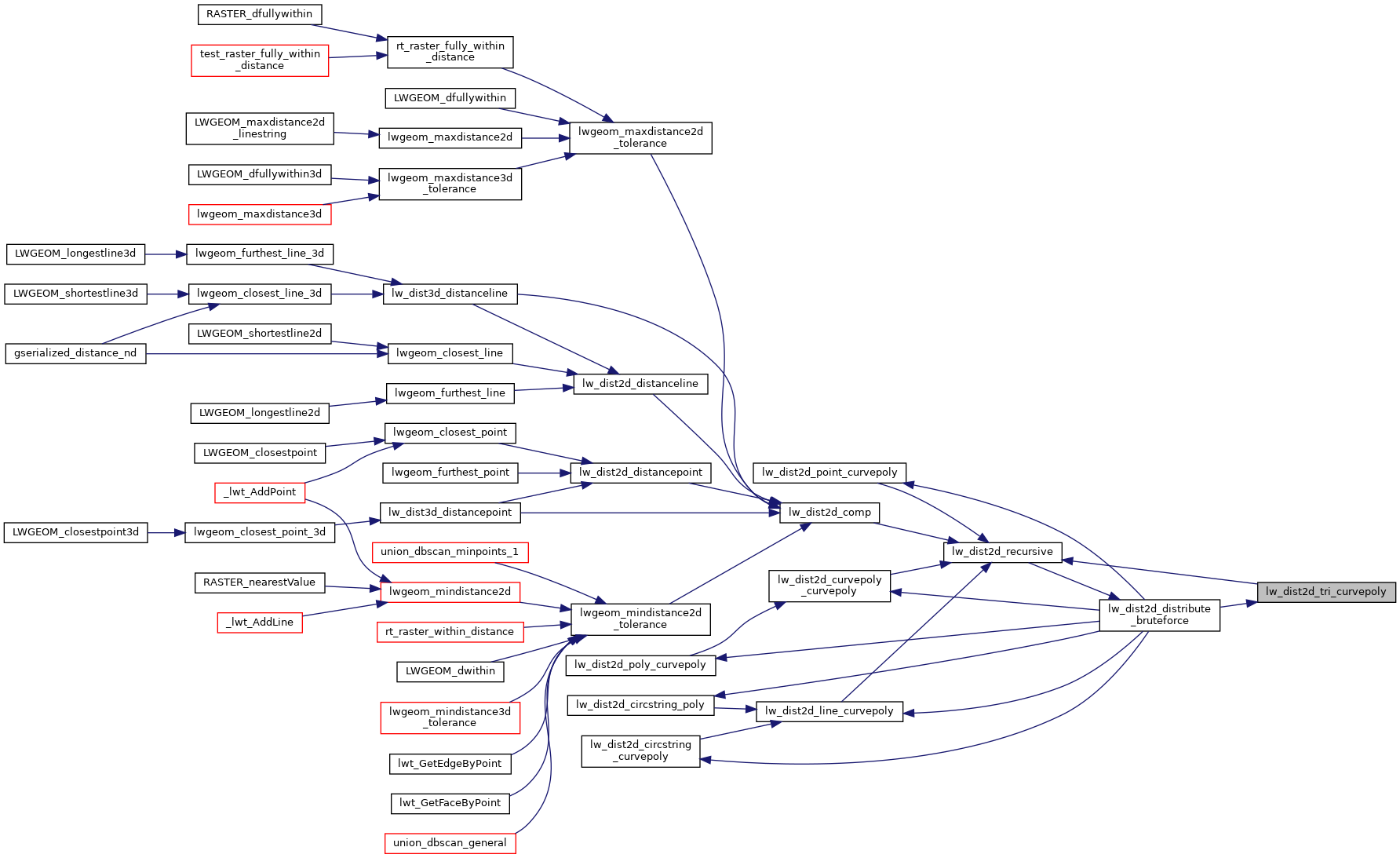◆ lw_dist2d_tri_curvepoly()
| int lw_dist2d_tri_curvepoly | ( | LWTRIANGLE * | tri, |
| LWCURVEPOLY * | poly, | ||
| DISTPTS * | dl | ||
| ) |
Definition at line 907 of file measures.c.
921 if (lwgeom_contains_point((LWGEOM *)tri, lw_curvering_getfirstpoint2d_cp(poly->rings[0])) != LW_OUTSIDE)
int lwgeom_contains_point(const LWGEOM *geom, const POINT2D *pt)
Definition: lwcompound.c:129
static const POINT2D * getPoint2d_cp(const POINTARRAY *pa, uint32_t n)
Returns a POINT2D pointer into the POINTARRAY serialized_ptlist, suitable for reading from.
Definition: lwinline.h:91
int lw_dist2d_recursive(const LWGEOM *lwg1, const LWGEOM *lwg2, DISTPTS *dl)
This is a recursive function delivering every possible combination of subgeometries.
Definition: measures.c:284
static const POINT2D * lw_curvering_getfirstpoint2d_cp(LWGEOM *geom)
Definition: measures.c:886
Definition: liblwgeom.h:443
Definition: liblwgeom.h:375
References DIST_MAX, DIST_MIN, DISTPTS::distance, getPoint2d_cp(), lw_curvering_getfirstpoint2d_cp(), lw_dist2d_recursive(), LW_FALSE, LW_OUTSIDE, LW_TRUE, lwgeom_contains_point(), DISTPTS::mode, LWCURVEPOLY::nrings, DISTPTS::p1, DISTPTS::p2, LWTRIANGLE::points, LWCURVEPOLY::rings, DISTPTS::tolerance, POINT2D::x, and POINT2D::y.
Referenced by lw_dist2d_distribute_bruteforce().
Here is the call graph for this function:

Here is the caller graph for this function:
